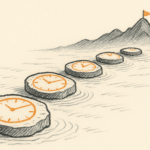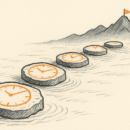How much unnecessary pain do you inflict on your customers?

Some years back I was the facilitator for a strategy retreat for a leading corporate, and checked into a hotel for the event. It was a high-level affair; all board members and senior executives were present. A top-notch hotel had therefore been chosen, to cater for the senior attendees and deliver an excellent service experience.
Or so we thought.
Upon checking in, I was taken to my room, walking through some excellent landscaped gardens. The room was spacious and seemed well kitted-out. But the problems began when I picked up the remote control to switch on the television set.
It was not obvious which button to press. Now, I am a veteran of many, many hotel nights across the globe, so I did not expect to be challenged by a remote control. But there I was, trying to just switch the TV on—and failing! I looked for an explanatory card—nothing. I pressed some prominent buttons (all with weird markings), and aha—the TV came on. Success? Not at all.
All I got was a weird blue screen with an odd menu. It was not obvious which buttons to use to navigate this menu—the usual cursor buttons had no effect. After 30 minutes I gave up and called reception in frustration.
A well-dressed techie arrived, and did various complicated things with the remote to get the TV programmes to come on. An insane number of steps were needed. Press this. Disable that. Enable something else. Press no. No again. Now press yes. Don’t use the arrow keys. Etc.
I asked him why a five-star hotel would inflict this experience on its guests. He admitted that the complicated in-room entertainment system was a procurement disaster, and there was an unresolved dispute going on with the vendor. I asked him how many times guests asked him to come to their rooms soon after checking in, just to get the TV and WiFi to work. He admitted he did it pretty much all the time. He looked very tired.
This experience heralded worse to come. The food and service also turned out to be sub-standard.
Last month I picked up a very interesting new book to read: The Ministry of Common Sense, by Martin Lindstrom. One of the early chapters is titled “Why Won’t My TV Turn On?” and it’s about, you guessed it, a TV remote. Mr Lindstrom seems to have had a very similar experience to mine, except his was in Miami, USA. His TV remote was also very complicated: “Infinite tiny numbers. A multitude of buttons. Three separate numerical keypads.” No obvious ON button. And when he finally managed to switch his TV on after “stabbing indiscriminately” at some buttons, he could not switch it off!
Mr Lindstrom managed, some months later, to corner an engineer at the company responsible for the TV remote, who reluctantly admitted to the internal problem that led to the nightmare design. Different departments would not work together, and so the remote was completely over-engineered. No one thought about the experience of using it from the customer’s point of view; each department did its own thing.
Wow. We are still here, aren’t we, deep into the 21st century. Big organizations still don’t get it. They still don’t grasp that what you think you offer isn’t what matters—it’s what you put your customers through that counts. If the customer experience is slow, unintuitive, full of unnecessary frictions, and intensely time-consuming—you fail.
And it is leaders that fail. We can’t blame individual employees or even departments for customer-experience fails. They are merely optimising their own deliverables. What is mostly lacking is high-level leadership that connects the dots across the organization; that makes it both vital and necessary for departments to collaborate and co-design; that studies customer journeys and strives to make them shorter, easier—and even enjoyable.
If the leaders can’t see the problem from the customer’s point of view, then no one will. If the leader can’t create the conditions for all employees to work seamlessly together, then it will never happen.
At my strategy retreat I used the hotel’s service debacle to get my client to understand what not to do in their business. Never take customers for granted. Never leave frontline employees to suffer your leadership fails. Never inflict woeful service on customers. Fix mistakes quickly.
I’ll let Mr Lindstrom have the final word, from his excellent and hilarious book: “Almost every stupidity and inconvenience we suffer as consumers can be traced back directly to a faulty or broken corporate ecosystem—one that has abandoned, for whatever reason, a few fundamental principles of common sense.”
(Sunday Nation, 29 August 2021)

Buy Sunny Bindra's new book
The X in CX
here »
Popular Posts
- Where are you rushing to—your funeral?June 29, 2025
- The map will appear—once you start walking.July 6, 2025
- We’re letting the bad drive out the goodJuly 20, 2025
- How to spot a real thinkerJune 15, 2025















